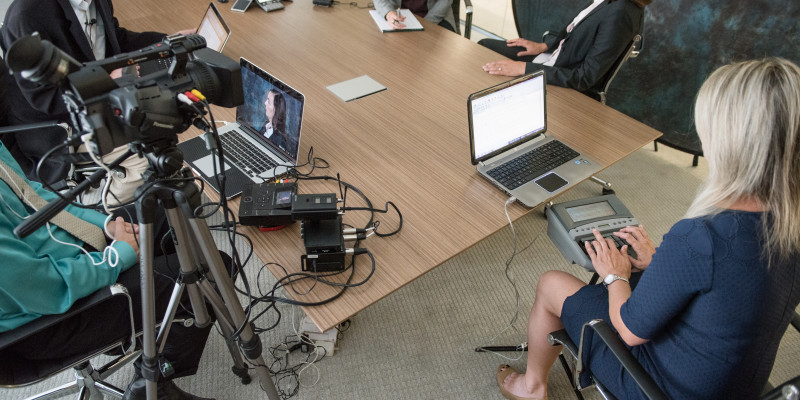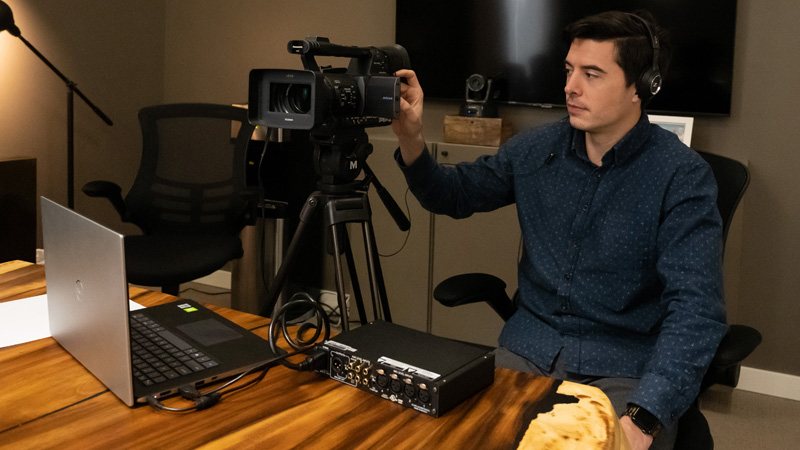Just How Legal Videography Improves Accuracy in Court Procedures
Just How Legal Videography Improves Accuracy in Court Procedures
Blog Article
Trick Advantages of Using Videography in Legal Situations
The combination of videography in legal situations presents a range of calculated benefits that can substantially influence test outcomes. By improving proof discussion and enhancing witness credibility, videography works as a powerful tool to involve jurors and communicate complicated narratives effectively. This tool preserves important statements, making certain that important details is not shed to memory decay. As the lawful landscape remains to progress, the implications of leveraging videography in trial settings merit better assessment, especially in understanding how these advantages equate into substantial results in the court room.
Boosted Evidence Discussion
Improved proof discussion with videography has changed the method lawful cases are argued and understood in the court room. By incorporating top notch video clip recordings right into lawful procedures, lawyers can communicate complex information in a more comprehensible and engaging way - Legal Videography. Videography enables the visualization of evidence, making it less complicated for discretionary to grasp the context and significance of today truths
In addition to enhancing quality, videography can also record real-time events, providing an authentic depiction of events significant to a situation. This immediacy can dramatically affect the persuasiveness of a disagreement, as aesthetic proof usually reverberates extra highly than created documentation. In addition, video clip evidence can include critical elements such as body movement, intonation, and ecological factors, every one of which contribute to a more holistic understanding of the case.
Making use of videography also enables for reliable organization of evidence, enabling lawyers to provide their disagreements in a coherent and rational fashion. By tactically integrating video into their discussions, lawful experts can promote an extra reliable analysis of the evidence, inevitably causing informed decision-making by the court. The transformative power of videography in lawful contexts is both obvious and crucial.
Better Witness Integrity

Video clip proof can also mitigate prospective biases that may arise from the witness's look or mannerisms in a real-time setting. By presenting a well-produced video clip, lawful teams can guarantee that the focus stays on the material of the testament instead of additional variables that might weaken reputation. Moreover, the possibility to review documented declarations can fortify witness consistency, as discrepancies can be dealt with prior to test, leading to even more trusted testimonies.
Additionally, the durability of videography offers a guard against memory degeneration or misinterpretation gradually. By having a clear, verifiable account of witness statements, lawful practitioners can construct a stronger situation, strengthening the total reliability of the witness and, subsequently, the honesty of the judicial process.
Involving Court Experience
Videography can substantially boost the jury's involvement during legal procedures. By incorporating premium video clip discussions, legal teams can keep the attention and record of jurors, transforming intricate information right into aesthetically engaging stories. This engagement is vital, as jurors usually struggle to soak up thick legal terminology and detailed information offered solely via traditional methods.
Video clip evidence permits jurors to witness events as they unravelled, offering a knockout post context that composed testaments might lack. The use of dynamic visuals can stimulate emotional reactions, making the situation much more relatable and remarkable. For example, surveillance video or reenactments can illustrate crucial minutes, allowing jurors to envision the proof in an engaging manner.
Furthermore, videography can assist in an extra interactive experience. Jurors can see and listen to witnesses, which includes a layer of credibility and immediacy that created records can not duplicate. This multi-sensory approach promotes much deeper comprehension and retention of the here and now material.

Effective Instance Storytelling
An engaging story is necessary for efficient situation storytelling in the court room. Videography offers as a powerful tool to craft and present this story, involving the jury and enhancing their understanding of the instance. By aesthetically portraying the events leading to the lawful conflict, videography enables attorneys to illustrate intricate situations in a clear and relatable fashion. This storytelling strategy can stimulate emotional actions and foster empathy, developing a much deeper connection between the court and the case.
Incorporating aspects such as witness computer animations, interviews, and restorations, videography offers a multi-dimensional perspective that standard approaches can not achieve - Legal Videography. This graph not only aids in making clear realities but likewise assists jurors retain vital details. The vibrant nature of video can damage down obstacles of comprehension, making detailed details much more available.
Eventually, effective case storytelling through videography transforms the court experience, permitting lawyers to provide their arguments in a influential and engaging fashion. By using the power of visuals, lawyers can considerably improve their capability to communicate vital stories and accomplish positive end results for their customers.
Conservation of Testaments
Maintaining testaments is a crucial aspect of lawful process, as the accuracy and stability of witness statements can considerably impact the outcome of a situation. Videography functions as an efficient tool in this regard, making certain that testaments are taped in their initial context, thus reducing the risk of misinterpretation or distortion with time.
By catching non-verbal and verbal signs, videography offers a comprehensive account of witness declarations, which can be invaluable throughout trial process. This approach not only records the content of the testament however likewise preserves the disposition and psychological reactions of witnesses, supplying juries a richer understanding of the testament's reputation and significance.
Additionally, the usage of videography assists in a more reliable evaluation of testimonies during post-trial evaluations or pre-trial preparations. Attorneys can review taped declarations to helpful resources clarify information, analyze This Site incongruities, or develop strategies for interrogation.
Fundamentally, videography improves the conservation of testimonies, cultivating a transparent lawful process that can result in more fair end results. By safeguarding the honesty of witness declarations, lawful experts can better advocate for their customers and maintain the concepts of justice.

Final Thought
In verdict, the combination of videography in lawful instances significantly enhances the presentation of proof, strengthens witness reliability, and mesmerizes juries through involving aesthetic material. This medium promotes efficient storytelling, permitting lawyers to convey stories that reverberate deeply with decision-makers. Furthermore, videography functions as a permanent document of testaments, reducing the danger of memory degeneration. Jointly, these benefits highlight the essential function of videography in contemporary lawful techniques, inevitably adding to more educated judicial results.
The combination of videography in legal cases provides a variety of calculated advantages that can considerably influence trial outcomes.Improved evidence presentation via videography has transformed the means lawful situations are argued and recognized in the court room.Videography can considerably elevate the court's interaction during legal process. By aesthetically illustrating the events leading to the legal dispute, videography allows attorneys to illustrate intricate situations in a clear and relatable manner.In verdict, the assimilation of videography in lawful instances dramatically improves the presentation of proof, boosts witness integrity, and astounds juries through involving visual content.
Report this page